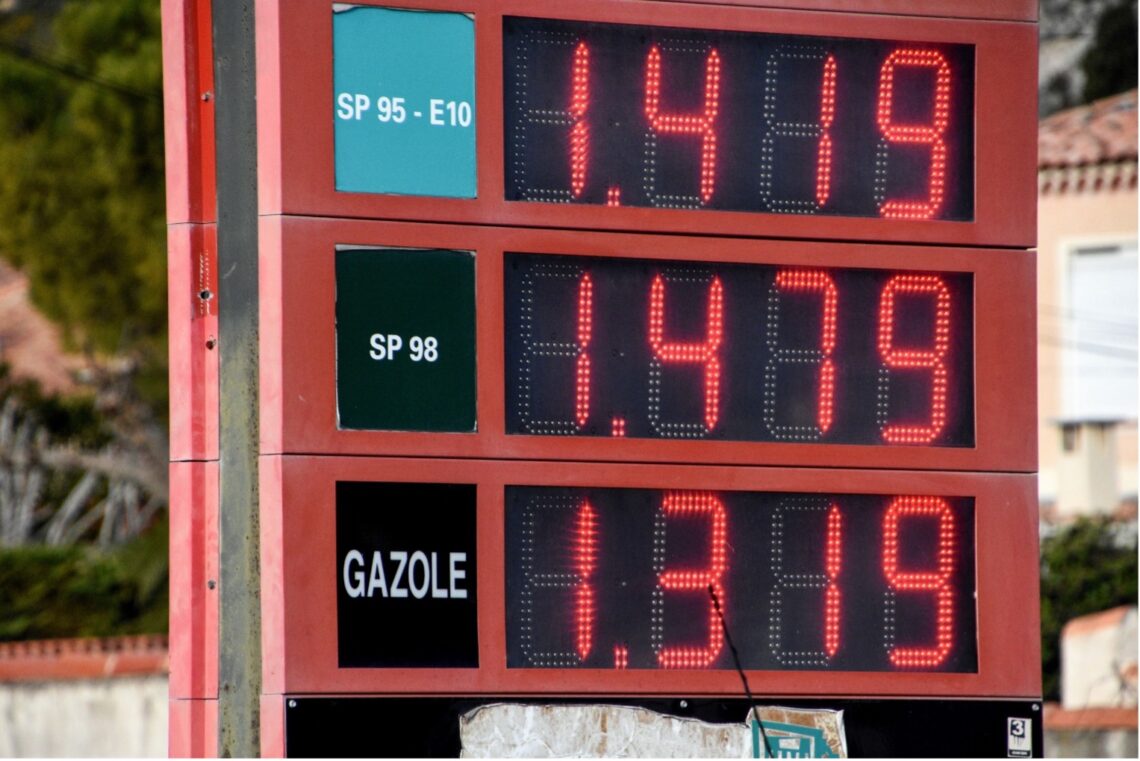The worrisome mechanics of fiscal illusion
Around the world, governments are finding ways to hide how much they are taxing their citizens. Though the practice of fiscal illusion creates a huge drag on economies, current political trends favor increased government spending.

In a nutshell
- Governments use ‘fiscal illusion’ to hide taxation
- The practice slows down economies and obscures the social contract
- To counteract fiscal illusion, more transparency and tax competition are needed
King Louis XIV’s finance minister, Jean-Baptiste Colbert, once famously said, “The art of taxation consists in so plucking the goose as to obtain the largest possible amount of feathers with the smallest possible amount of hissing.”
That sentiment exemplifies the governments’ attitude when they engage in “fiscal illusion,” a term coined by Italian economist Amilcare Puviani in the early 20th century. Fiscal illusion occurs when politicians and bureaucrats seek to hide how much taxation government spending requires. The practice makes it difficult for citizens to determine if the services they receive from the government are worth the costs. Fiscal illusion takes various forms and has deep economic and political consequences.
Small and invisible
The more a tax weighs on a particular economic activity, the less the economy gains from it. Taxation measures generally aim to limit this phenomenon. Authorities tax activities that are hard to avoid (for consumers or producers), or assets that are hard to move. Seen from this perspective, Colbert was right that minimizing the impact of taxation also minimizes inefficiency.
The bigger the tax, the higher people’s incentive to avoid or question it.
But his view goes well beyond efficient taxation. The point was to hide taxes so as to make them as inconspicuous as possible. One avenue is to increase the number of nearly invisible levies that make it harder for people to register the burden of taxation. These small taxes are only a tiny part of each transaction. The more visible and the bigger the tax, the higher people’s incentive to avoid it or to question its legitimacy.
Indirect taxation
For the same reason, politicians and bureaucrats often use indirect taxation – taxes on transactions rather than directly on income or wealth. Increasing the share of indirect levies in overall taxation is another form of illusion. Writing a big check to the taxman once a year will make people carefully consider how the government is spending their money. It gives citizens a clear incentive to hold officials accountable. The rising popularity of paying taxes in monthly installments and of withholding income tax from paychecks therefore contributes to fiscal illusion.
The share of households paying income tax also matters greatly. Those that do not might be convinced that other people are paying for public spending. Their incentive as citizens to hold decision makers accountable is much weaker. Moreover, they would be more likely to vote for politicians that advocate higher public spending. In France, 55 percent of households do not pay income tax. That does not mean that France’s modest-earning households pay less in taxes than elsewhere, only that their taxes are indirect, and therefore less visible.
Hidden taxes
Another strategy is to simply hide taxes. For example, in various countries taxation on gasoline includes not only a value added tax (VAT), but also an excise duty on energy consumption, which does not appear on receipts. In some cases, the VAT can also be applied to the amount of this excise duty.
In a country like France, the excise can equal 50 percent of the final price – in other words, a taxation rate of 100 percent. Combined with VAT, and depending on oil prices, the overall taxation rate can easily exceed 200 percent, while only 20 percent is listed on the receipt. For many years, the figure was only available on a government website and expressed in hectoliters.

Another way to create opacity is when different levels of government are doing the taxing and spending through a web of complicated practices and systems. The issue is not so much of the number of layers of government, but the complexity of financial flows between the layers.
A country with five layers of government, each in charge of clearly defined public spending missions and of levying corresponding taxes, can have a high level of fiscal transparency – each level can be made accountable. A country with just three layers but convoluted financial flows between them produces fiscal illusion. It is hard for citizens to track who pays what to whom and for what in that administrative maze.
Debt and inflation
Governments can also create fiscal illusion by asking tomorrow’s taxpayers to finance today’s public spending via debt. That debt will need to be paid off by citizens that are currently too young to vote. In the meantime, the tax-paying/voting population does not feel the sting.
Combined with indirect taxation and other mechanisms of fiscal illusion, citizens simply do not see that they are footing the public spending bill through debt. It still looks like the proverbial free lunch. Without pressure from voters to constrain spending and debt, politicians are happy to let the next wave of leaders deal with the consequences of their actions.
Worse, the unconventional monetary policies that have been in place since the 2008 financial crisis have drastically reduced the cost of sovereign borrowing. Originally implemented to help avoid recession and give governments breathing room for reform, ultra-low interest rates have encouraged politicians to resort to more debt: monetary policy effectively subsidizes fiscal policy.
It is hard for citizens to understand the consequences of inflation financing.
The last strategy to spend without citizens seeing taxes is to resort to money printing. In the early stages of the process, it is hard for citizens to understand the consequences of inflation financing. They may even ask for more of it as they see the benefits (more spending) but not the costs (inflation). Politicians frequently use this tactic to finance spending for various constituencies and get public opinion to swing in their favor.
The inflation only sets in after the election. Until the late 1970s, governments around the world even welcomed some inflation, as it helped them reduce their real debt. But inflation reduces a country’s competitiveness in global markets – a problem that has become more important as globalization has increased. In a world where all governments use inflationary tactics, though, all bets are off.
What are the effects?
Fiscal illusion’s consequences are straightforward. Economically, it can encourage both public officials and citizens to spend more than what would be reasonable, which translates into inefficiency. If this spending is financed by higher levels of taxation, it drags on the economy by discouraging economic activity. If it is financed through borrowing, it increases public debt levels, which means a rise in interest payments, which eat into governments’ budgets. There is also a risk of sovereign bankruptcy if interest rates rise.
If the spending is financed by printing money, then the associated inflation – especially if it is high and volatile – has many negative consequences. These include reduced purchasing power, confusion in the price system, discouraging borrowing and lending, and reducing savings and investment. Overall economic activity falls, creating unemployment and the dreaded “stagflation.” As seen in Zimbabwe or Venezuela, hyperinflation corrupts money and destroys trade, causing misery.
Without accountability mechanisms, democracy becomes a technocracy.
Politically, fiscal illusion obscures the social contract of democracy between citizens who pay taxes and public decision makers who spend their money. Democracy presupposes that citizens do not relinquish all their monitoring power to representatives, elected officials and bureaucrats. Without accountability mechanisms, democracy becomes a technocracy.
Scenarios
In our not-yet post-Covid world, can we expect trends to reinforce or undermine fiscal illusion? The plausible scenarios offer a pessimistic outlook.
While the world was already on a trajectory toward dangerous levels of debt, spending to mitigate the effects of the pandemic has amplified the trend (see the Covid-19 recovery funds in Europe and the United States). In the EU, Commissioner for Economy Paolo Gentiloni and others, such as French President Emmanuel Macron, are pushing to relax national budgetary rules.
Rise in inflation
Monetary policy will continue to support deficit-fueled fiscal policy. Modern Monetary Theory (MMT), which advocates going much farther in this respect, was once a radical heterodoxy. Now it is gaining traction and political support. One counterweight could be a rise in inflation that would tame such policies, and, indirectly, fiscal illusion. Yet MMT advocates raising taxes when inflation hits. In fact, it promotes indirect taxes – a source of fiscal illusion – to tame consumption in such cases.
Egalitarian policies
A second factor to consider is the various popular movements in favor of more egalitarian policies, together with the rise in unemployment caused by the recent economic lockdowns. These phenomena create demand for more government spending – and thus more fiscal illusion.
Some social movements have made demands for more efficiency and accountability in government spending, so this could produce a positive scenario. As with the Yellow Vest movement in France, however, such campaigns can end up demanding more taxes and spending.
Tax competition
Thirdly, current economic conditions could reduce the share of the minority paying direct progressive taxation. Indirect taxes would dominate.
One force against fiscal illusion is tax competition. By making various governments’ taxation levels more transparent and setting them in competition with each other, pressure builds on leaders to monitor taxation levels and the efficacy of public spending. Efforts by the OECD, various economists and now the Biden administration to reduce tax competition through a global minimum corporate tax, together with popular support to make corporations and the rich “pay their fair share” will strengthen the trend. The harmful effect of less tax competition will increase opportunities for more fiscal illusion.







